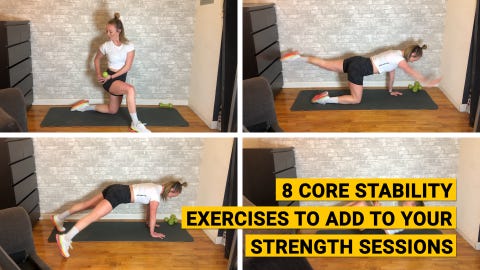Best Exercise for Blood Pressure, According to a New Study
- All types of physical activity can help improve blood pressure, but new research suggests that isometric exercise may provide the best benefit.
- The positive effect exercise has on blood pressure supports cardiovascular health, and the more you move, the better the effects.
Any kind of activity can improve blood pressure to some degree. In fact, the American Heart Association suggests exercise is so powerful, it should be “prescribed” as a first-line treatment strategy for hypertension. But a recent research review in the British Journal of Sports Medicine suggests isometric exercise may offer the biggest benefit.
Also known as static exercises, isometric exercises involve contracting a specific muscle or group of muscles in one position without moving. This can be done with or without weights; examples include planks, wall sits, and squat holds.
In the review, researchers looked at 270 randomized, controlled trials that represented nearly 16,000 participants engaged in different types of exercise programs. Although there were significant reductions in blood pressure with aerobic training, dynamic resistance training, and high-intensity interval training, it was isometric exercise that seemed the most effective at improving blood pressure regulation.
More From Bicycling
play iconThe triangle icon that indicates to play
In terms of why this type of exercise might have such a profound effect on blood pressure, the researchers concluded it may be because isometric exercise compresses blood vessels during a static muscle contraction. When they’re released, the greater blood flow improves their function and structure.
Another mechanism that’s helpful is the way physical activity in general actually increases blood pressure temporarily, according to Daniel Hermann, M.D., interventional cardiologist with Memorial Hermann in Houston.
More Health in the News
Research Suggests Reduce Sitting Time By One Hour to Improve Health
Westend61//Getty Images
Spending Time in Nature Influences Your Food Choices, Says Research
Justin Paget//Getty Images
Study Shows Cutting Back on Social Media Boosts Mental Health
Klaus Vedfelt//Getty Images
Morning vs. Evening Exercise Yields Different Results, Study Says
John P Kelly//Getty Images
The minor bump in pressure from exercise puts just enough stress on the cardiovascular system to strengthen the blood vessels, similar to how lifting weights prompts enough stress and inflammation in the muscles to improve their composition overall, he told Bicycling.
“Aerobic exercise in particular conditions the cardiovascular system in a way that regulates blood pressure,” he said. “That’s hugely important since hypertension can lead to damage in all the organ systems, including your brain. Basically, high blood pressure causes wear and tear on the blood vessels that supply all your organs.”
Previous research suggests there’s a dose response as well, meaning that the more you exercise, the lower your hypertension risk becomes.
For example, a study in the Journal of Human Hypertension looking at nearly 7,000 cyclists found those with the most weekly volume of cycling had the lowest risk of being diagnosed with both high blood pressure and high cholesterol. Those researchers noted that this association was true for both men and women, regardless of age.
Although the most recent study highlights the value of isometric exercise, the fact is that no matter how you move, it will help your cardiovascular function, said Hermann. And the more you exercise, the bigger the benefits.
Elizabeth Millard is a freelance writer focusing on health, wellness, fitness, and food.
No Byline Policy
Editorial Guidelines
Corrections Policy
Source




